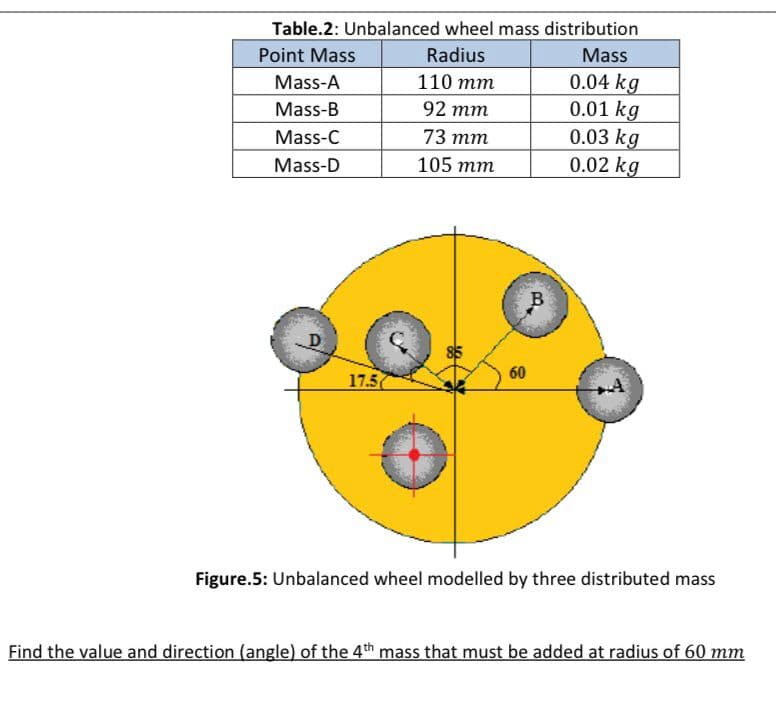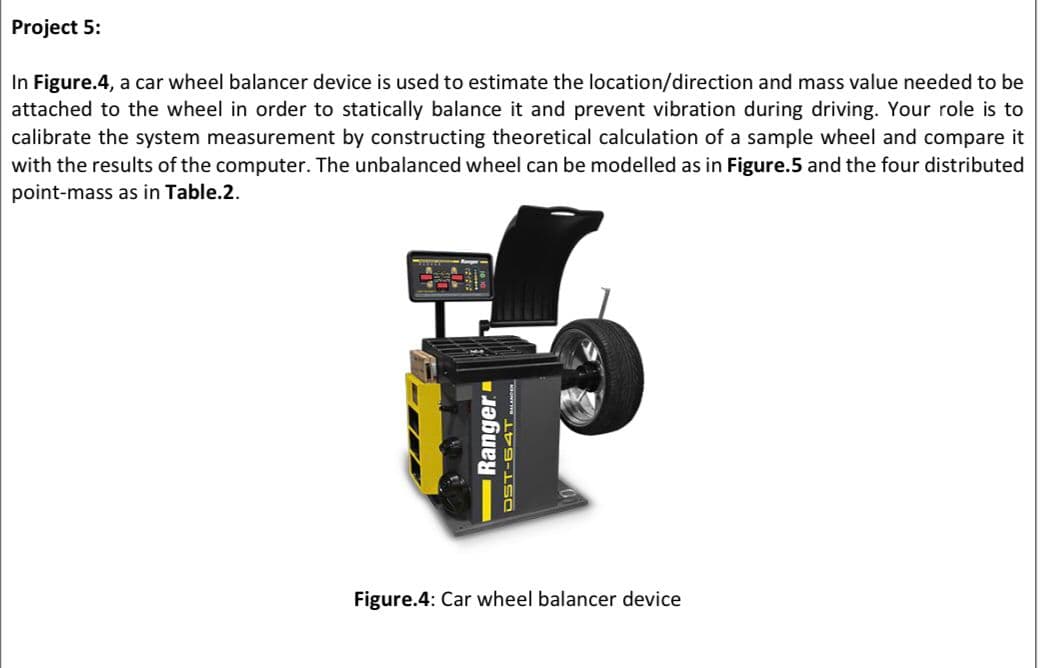Table.2: Unbalanced wheel mass distribution Point Mass Radius Mass-A Mass-B Mass-C Mass-D 17.5 110 mm 92 mm 73 mm 105 mm 60 B Mass 0.04 kg 0.01 kg 0.03 kg 0.02 kg Figure.5: Unbalanced wheel modelled by three distributed mass Find the value and direction (angle) of the 4th mass that must be added at radius of 60 mm
Table.2: Unbalanced wheel mass distribution Point Mass Radius Mass-A Mass-B Mass-C Mass-D 17.5 110 mm 92 mm 73 mm 105 mm 60 B Mass 0.04 kg 0.01 kg 0.03 kg 0.02 kg Figure.5: Unbalanced wheel modelled by three distributed mass Find the value and direction (angle) of the 4th mass that must be added at radius of 60 mm
Elements Of Electromagnetics
7th Edition
ISBN:9780190698614
Author:Sadiku, Matthew N. O.
Publisher:Sadiku, Matthew N. O.
ChapterMA: Math Assessment
Section: Chapter Questions
Problem 1.1MA
Related questions
Question
100%
In Figure.4, a car wheel balancer device is used to estimate the location/direction and mass value needed to be
attached to the wheel in order to statically balance it and prevent vibration during driving. Your role is to
calibrate the system measurement by constructing theoretical calculation of a sample wheel and compare it
with the results of the computer. The unbalanced wheel can be modelled as in Figure.5 and the four distributed
point-mass as in Table.2.

Transcribed Image Text:Table.2: Unbalanced wheel mass distribution
Point Mass
Radius
Mass
Mass-A
0.04 kg
Mass-B
0.01 kg
Mass-C
Mass-D
17.5
110 mm
92 mm
73 mm
105 mm
60
B
0.03 kg
0.02 kg
Figure.5: Unbalanced wheel modelled by three distributed mass
Find the value and direction (angle) of the 4th mass that must be added at radius of 60 mm

Transcribed Image Text:Project 5:
In Figure.4, a car wheel balancer device is used to estimate the location/direction and mass value needed to be
attached to the wheel in order to statically balance it and prevent vibration during driving. Your role is to
calibrate the system measurement by constructing theoretical calculation of a sample wheel and compare it
with the results of the computer. The unbalanced wheel can be modelled as in Figure.5 and the four distributed
point-mass as in Table.2.
福
-Ranger
DST-64T ACET
Figure.4: Car wheel balancer device
Expert Solution
This question has been solved!
Explore an expertly crafted, step-by-step solution for a thorough understanding of key concepts.
Step by step
Solved in 4 steps

Knowledge Booster
Learn more about
Need a deep-dive on the concept behind this application? Look no further. Learn more about this topic, mechanical-engineering and related others by exploring similar questions and additional content below.Recommended textbooks for you

Elements Of Electromagnetics
Mechanical Engineering
ISBN:
9780190698614
Author:
Sadiku, Matthew N. O.
Publisher:
Oxford University Press

Mechanics of Materials (10th Edition)
Mechanical Engineering
ISBN:
9780134319650
Author:
Russell C. Hibbeler
Publisher:
PEARSON

Thermodynamics: An Engineering Approach
Mechanical Engineering
ISBN:
9781259822674
Author:
Yunus A. Cengel Dr., Michael A. Boles
Publisher:
McGraw-Hill Education

Elements Of Electromagnetics
Mechanical Engineering
ISBN:
9780190698614
Author:
Sadiku, Matthew N. O.
Publisher:
Oxford University Press

Mechanics of Materials (10th Edition)
Mechanical Engineering
ISBN:
9780134319650
Author:
Russell C. Hibbeler
Publisher:
PEARSON

Thermodynamics: An Engineering Approach
Mechanical Engineering
ISBN:
9781259822674
Author:
Yunus A. Cengel Dr., Michael A. Boles
Publisher:
McGraw-Hill Education

Control Systems Engineering
Mechanical Engineering
ISBN:
9781118170519
Author:
Norman S. Nise
Publisher:
WILEY

Mechanics of Materials (MindTap Course List)
Mechanical Engineering
ISBN:
9781337093347
Author:
Barry J. Goodno, James M. Gere
Publisher:
Cengage Learning

Engineering Mechanics: Statics
Mechanical Engineering
ISBN:
9781118807330
Author:
James L. Meriam, L. G. Kraige, J. N. Bolton
Publisher:
WILEY